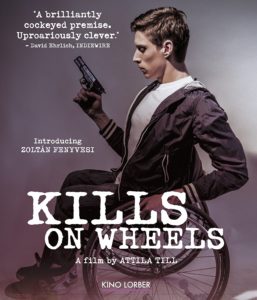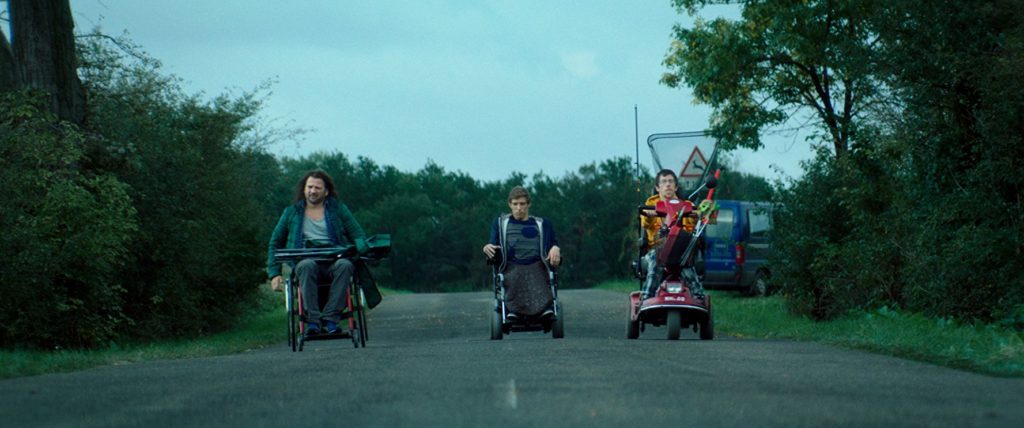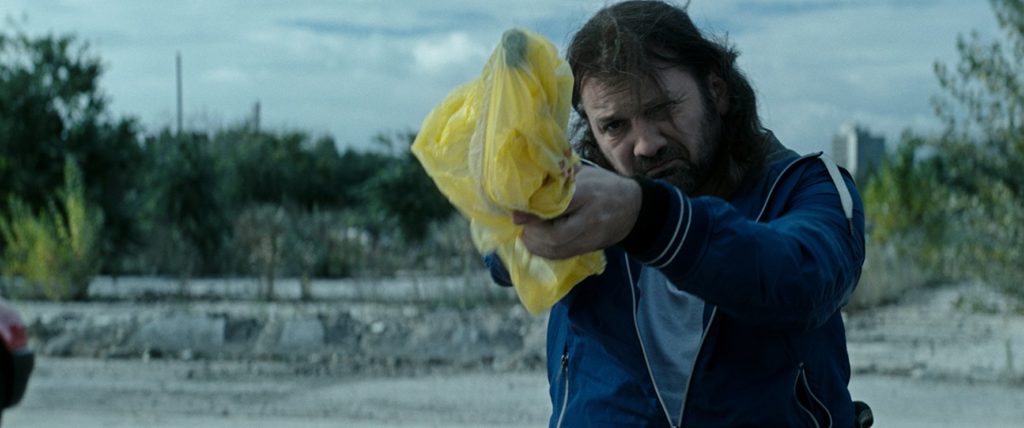Hungarian Hitman Drama gets up to Speed via Wheelchairs
DIRECTED BY ATTILA TILL/HUNGARIAN/2016
STREET DATE: JANUARY 16, 2018/KINO LORBER
 The male power fantasy is nothing new to cinema. Far too often, in fact, it’s the fuel that powers the machine.
The male power fantasy is nothing new to cinema. Far too often, in fact, it’s the fuel that powers the machine.
But, when it comes time to explore and/or deconstruct it, the machine must suddenly rely upon raw manpower. Case in point: Hungarian filmmaker Attila Till’s second feature, Kills on Wheels (Tiszta Szívvel). Though the English version of the title doesn’t exactly roll, the protagonists certainly do. Kills on Wheels spins successfully on the premise of wheelchair hitmen operating in plain sight, purely under the cover of their own social invisibility.crime
Mixing the institutional bleakness of One Flew Over the Cuckoo’s Nest with the hotshot criminal bluster of Lock, Stock and Two Smoking Barrels, Till’s tale finds two physically challenged guys making their way into the assassination game. The film features real life non-actor paraplegics in the young leads, chair-bound Ádám Fekete as Barba Papa and muscularly challenged Zoltán Fenyvesi as his awkward buddy Zolika. It is an element as bold and different as the story itself.
…a very worthwhile discovery, particularly for those interested in the modern crime film genre, as well as anyone open to a violent yet sensitive insight on the lives of the disabled.
Barba and Zolika spend their days in menial occupational therapy in a dreary facility, breaking off when they can to collaborate on their own comic book. Barba needs expensive if he is to survive. His completely absentee father has offered to pay for it, but to the chagrin of his stressed out mother, he refuses the offer. He will not take the help of this man. He will get the money himself.

But not without the guidance of the older, gruff and surly Rupaszov (a most memorable Szabolcs Thuróczy). Rupaszov is also confined to a wheelchair, but has carved out a lucrative little niche in the underworld in spite of that. Actually, it’s because of that. He is using the unfortunate status he’s been stricken with to truly be the hitman no one expects. Early in the film, we see Rupaszov shoot someone in public, in broad daylight, and then just roll away during the ensuing panic. Thuróczy plays him with a magnetic blend of badassery, enigma, pathos, and a hint of mischief.
Kills on Wheels was Hungary’s official submission for the 89th Academy Awards, Best Foreign Language Film category. It’s a very worthwhile discovery, particularly for those interested in the modern crime film genre, as well as anyone open to a violent yet sensitive insight on the lives of the disabled. Till’s film delivers to the cinema the gift of three very rare, well realized physically disabled main characters.

Szabolcs Thuróczy takes aim in plain sight in KILLS ON WHEELS.
For those of us who are able-bodied, Kills on Wheels serves as a rollicking reminder that people with disabilities are no different in terms of inner complexities. Wants, dreams, needs, and even humor about themselves are, of course, just as valid for them. They are far from helpless, and their stories are not over. Even their stories that tend to function male power fantasies, such as this one, can still burn rubber in their own ways. Perhaps this is one instance where the facade of “power” crumbles in favor of “empower”. It’s is a further push towards altering that particular cinema fuel for the better.
Kino Lorber’s Blu-Ray release of Kills on Wheels is a humble yet effective package. Besides the movie, its transfer preserving the film’s dynamic cinematography and vivid moments which focus on the in-world hand drawn comic book illustrations, there are also about six minutes of deleted scenes (some dramatic moments worth checking out) and a collected series of behind-the-scenes featurettes of comparable length.

